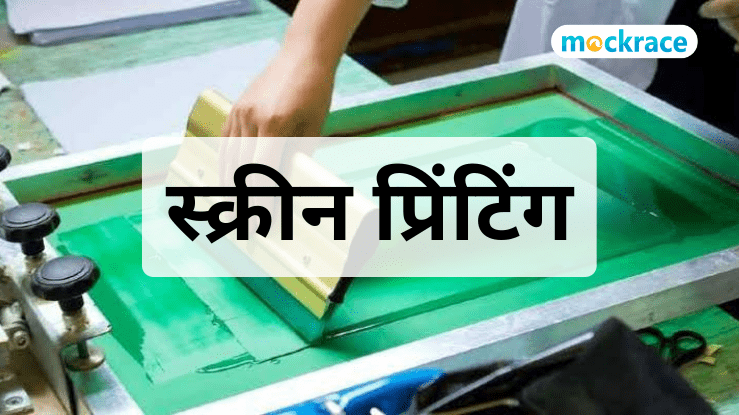Screen printing is the process of transferring a stencilled design onto a flat surface using a mesh screen, ink and a squeegee. Fabric and paper are the most commonly screen-printed surfaces, but with specialised inks it’s also possible to print onto wood, metal, plastic, and even glass.
स्क्रीन प्रिंटिंग एक जाल स्क्रीन, स्याही और एक स्क्वीजी का उपयोग करके एक सपाट सतह पर एक स्टेंसिल डिज़ाइन को स्थानांतरित करने की प्रक्रिया है। कपड़ा और कागज सबसे अधिक स्क्रीन-मुद्रित सतहें हैं, लेकिन विशेष स्याही के साथ लकड़ी, धातु, प्लास्टिक और यहां तक कि कांच पर भी प्रिंट करना संभव है।
Screen Printing Machine price in India
Screen Printing machine की कीमत अलग अलग होती है।
The avg. market price of Fully Automatic Screen Printing Machine in India is Rs 1.9 Lakh/ Piece.
लेकिन अगर आपको automatic मशीन नही चाहिए तो स्क्रीन प्रिंटिंग का system लगभग 4000-6000 के बीच तैयार हो जाता है।
इसमे आप शादी कार्ड, अन्य कार्ड, आदि घर बैठे प्रिंट कर पाएंगे।
Marriage Card Printing machine in India शादी के कार्ड छापने का मशीन
शादी के कार्ड ओफ़्सेट मशीन व स्क्रीन प्रिंटिंग दोनों तरीकों से छापे जाते हैं। ज्यादातर कार्ड छोटे स्तर पर छापे जाते हैं व उनकी संख्या कम होती है इसलिए उन्हें स्क्रीन प्रिंटिंग द्वारा छापा जाता है क्योंकि इसकी मशीन की लागत कम होती है व हर कोई इसे कर सकता है। ओफ़्सेट मशीन महंगी आती है व उसकी छपाई भी बड़े स्तर पर होती है।
Screen printing, also known as silk screening, is a printing technique used to transfer ink onto a surface through a mesh screen. It is a popular method for creating high-quality, durable prints on various materials such as fabric, paper, plastic, glass, and metal.
The process of screen printing involves the following steps:
- Design Preparation: The design or image to be printed is created or prepared using graphic design software. It can be a simple logo or a complex artwork.
- Screen Preparation: A mesh screen made of polyester or nylon is stretched tightly over a frame, creating a flat surface. The screen is then coated with a light-sensitive emulsion.
- Image Transfer: The design is printed onto a transparency film, which is placed on top of the prepared screen. The screen is exposed to ultraviolet (UV) light, curing the emulsion except for the areas covered by the design.
- Washing and Drying: The screen is washed with water, removing the uncured emulsion and revealing the stencil with the design. The screen is then dried before the printing process.
- Printing: The screen is placed over the material to be printed, such as a t-shirt or paper. Ink is applied to the top edge of the screen and spread across the stencil using a squeegee. The ink passes through the open areas of the stencil and transfers onto the material below.
- Repeat: The process is repeated for each color in the design, allowing for multi-colored prints. Each color requires a separate screen and printing pass, aligning the screens accurately to create the desired image.
- Curing: Once the printing is complete, the ink is typically dried or cured using heat or ultraviolet light to ensure it adheres to the material and becomes permanent.
Screen printing is valued for its versatility, durability, and ability to produce vibrant and opaque colors. It is commonly used in the production of custom t-shirts, posters, signage, labels, promotional products, and more.

